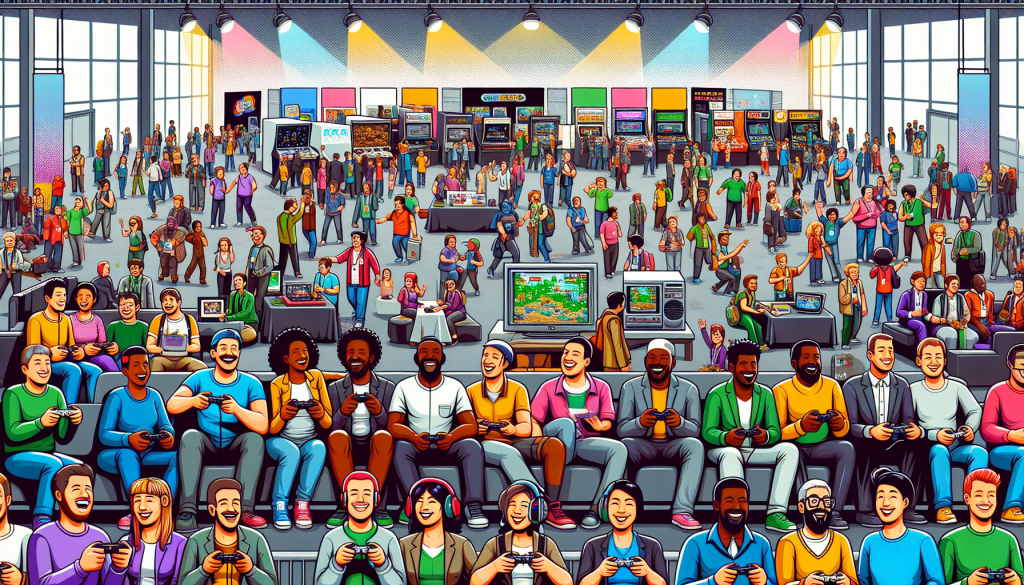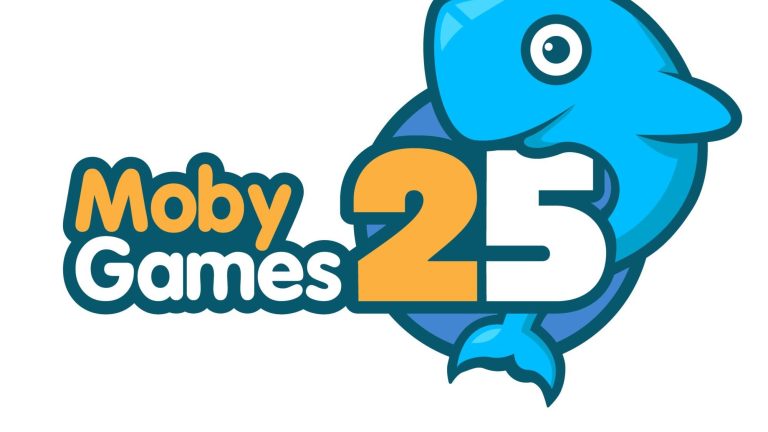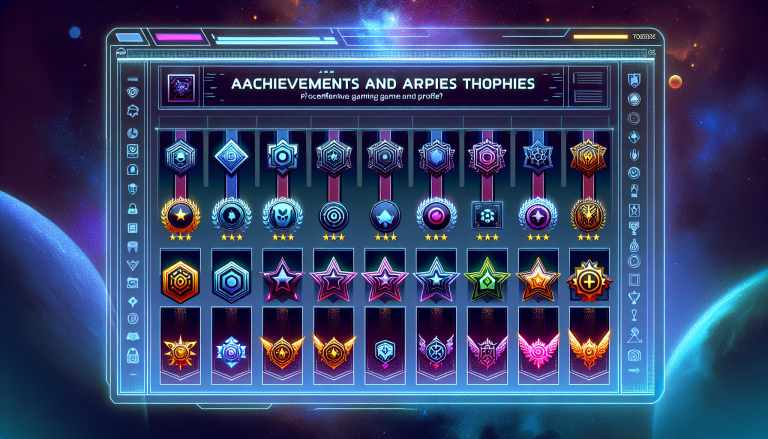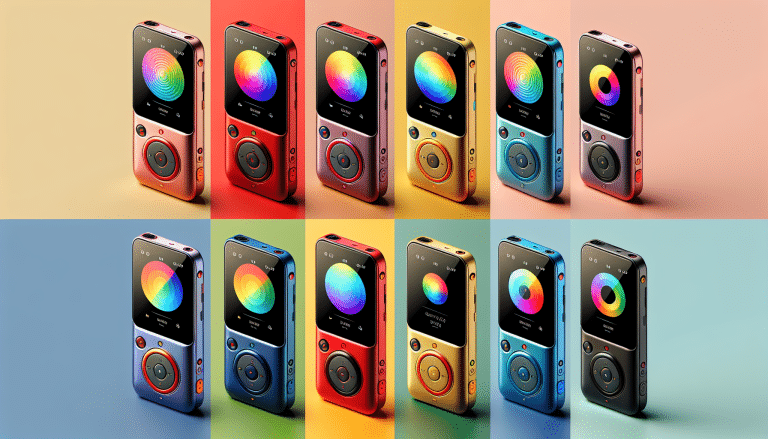Are you a fan of retro games? Do you dream of creating your own nostalgic gaming experience? Well, you’re in luck! In this article, we’ll explore the essential tools you need to develop your very own retro game. Whether you’re a seasoned developer or just starting out, these tools will help you bring your vision to life.
1. Essential Tools for Retro Game Development
Before we dive into the world of retro game development, let’s take a look at the essential tools you’ll need to get started. These tools will help you build, design, and test your game, ensuring a smooth development process.
Game Engines
One of the most crucial tools for retro game development is a reliable game engine. Game engines are software frameworks that provide a set of tools and functionalities to create games. They simplify the development process by handling complex tasks such as graphics rendering, physics simulation, and user input.
There are several game engines available, each with its own strengths and features. Some popular options for retro game development include:
- Unity: Unity is a versatile game engine that supports multiple platforms, making it ideal for creating retro games that can be played on different devices.
- Godot: Godot is an open-source game engine that is known for its user-friendly interface and powerful features. It’s a great choice for both beginners and experienced developers.
- GameMaker: GameMaker is a beginner-friendly game engine that allows you to create retro-style games without the need for extensive coding knowledge.
Pixel Art Tools
Pixel art is a key element of retro games, and having the right tools to create pixel art is essential. These tools will help you design stunning graphics that capture the essence of classic gaming.
Some popular pixel art tools include:
- Aseprite: Aseprite is a powerful pixel art editor that provides a range of tools and features specifically designed for creating retro-style graphics.
- Piskel: Piskel is a web-based pixel art editor that is perfect for beginners. It’s user-friendly and offers a variety of drawing and animation tools.
- GraphicsGale: GraphicsGale is a versatile pixel art editor that allows you to create, edit, and animate sprites. It also supports various image formats.
Sound and Music Tools
No retro game is complete without its iconic sound effects and catchy tunes. To create the perfect audio experience, you’ll need the right sound and music tools.
Here are a few tools to consider:
- FL Studio: FL Studio is a popular digital audio workstation that allows you to compose, arrange, and mix music. It offers a wide range of virtual instruments and effects.
- BeepBox: BeepBox is a web-based tool that allows you to create chiptune music. It’s user-friendly and perfect for creating those classic 8-bit tunes.
- Bxfr: Bxfr is a great tool for generating retro-style sound effects. It allows you to customize and export sounds in various formats.
These are just a few examples of the essential tools you’ll need for retro game development. As you explore the world of game development, you may discover additional tools that suit your specific needs and preferences. Remember to experiment and have fun along the way!
Design Principles for Creating a Retro Game So, you’ve decided to embark on the exciting journey of creating your very own retro game. Congratulations! With the right design principles, you can capture the essence of classic gaming and take players on a nostalgic trip down memory lane. In this article, we will explore some essential design principles that will help you create a retro game that is engaging, enjoyable, and authentic. 1. Embrace Pixel Art: One of the defining features of retro games is their pixelated art style. Embrace this aesthetic and use it to your advantage. Create vibrant and detailed pixel art sprites for your characters, objects, and environments. Pay attention to color palettes, limited color choices, and the overall pixel density. This will not only give your game a nostalgic feel but also make it visually appealing to players. 2. Simple Controls, Deep Gameplay: Retro games are known for their simple and intuitive controls. Your game should be easy to pick up and play, but don’t let simplicity limit the depth of gameplay. Incorporate challenging levels, hidden secrets, and rewarding mechanics to keep players engaged and coming back for more. 3. Engaging Story: While retro games may not have had the advanced storytelling capabilities of modern games, they often had captivating narratives that kept players hooked. Craft a compelling story that unfolds as players progress through the game. Use text-based dialogues or minimalistic cutscenes to convey the narrative and create an immersive experience. 4. Classic Sound Design: Sound and music play a crucial role in creating a retro gaming atmosphere. Use chiptune music, characterized by its synthesized sounds, to evoke nostalgia in players. Incorporate sound effects that are reminiscent of classic arcade games. The right audio elements can transport players back in time and enhance their overall experience. 5. Balancing Difficulty: Retro games were notorious for their challenging gameplay. Strive to strike a balance between difficulty and accessibility. Provide players with achievable goals, but keep them engaged by gradually increasing the challenge. Allow for multiple difficulty levels to cater to different types of players, from casual gamers to hardcore enthusiasts. 6. Replayability: Retro games often had high replay value, keeping players engaged long after the initial playthrough. Introduce elements like secret levels, unlockable characters, or different paths to encourage players to revisit your game. This will not only extend the lifespan of your game but also create a sense of discovery and excitement. 7. Authentic Feel: To truly capture the essence of classic gaming, pay attention to the small details. Mimic the limitations of retro hardware, like limited color palettes, sprite size restrictions, and memory constraints. By replicating these constraints, you can create an authentic retro gaming experience that will resonate with players. Remember, while it’s important to embrace the design principles of retro games, don’t be afraid to add your own unique touch. Use these principles as a starting point and let your creativity shine through. With the right mix of nostalgia, engaging gameplay, and attention to detail, you can create a retro game that will captivate players and transport them back to a bygone era of gaming. Now that you’re armed with these design principles, it’s time to dive into the exciting process of developing your very own retro game. Stay tuned for the next section, where we will provide you with a step-by-step guide on how to bring your retro game to life from scratch. Get ready to unleash your creativity and embark on a nostalgic adventure that will delight players of all generations.Capturing the Essence of Classic Gaming: Key Elements to Consider
When it comes to retro game development, there is a certain charm and appeal that captures the hearts of gamers young and old. The pixelated graphics, the simple yet addictive gameplay, and the nostalgic feeling of stepping back in time all contribute to the allure of classic gaming. But how can you capture that essence and create a retro game that truly resonates with players? Here are some key elements to consider:
1. Visual Style
The visual style of a retro game is one of its defining characteristics. The pixel art and limited color palettes of old-school games like Super Mario Bros. or Pac-Man are instantly recognizable and evoke a sense of nostalgia. When designing your retro game, pay attention to the details of the visual style. Use pixel art techniques to create character sprites and background elements, and limit your color palette to match the limitations of the hardware from that era. This attention to detail will help transport players back to the golden age of gaming.
2. Simple Gameplay Mechanics
Retro games are known for their simple yet addictive gameplay mechanics. Whether it’s jumping on platforms, shooting enemies, or solving puzzles, the gameplay should be easy to pick up but difficult to master. Avoid overcomplicating things with complex controls or convoluted objectives. Instead, focus on creating tight and responsive controls that allow players to quickly understand and enjoy the core mechanics of your game.
3. Chiptune Soundtrack
The soundtracks of retro games are iconic and often stay with players long after they’ve put down the controller. Chiptune music, which utilizes the sounds and limitations of old video game hardware, adds another layer of nostalgia to the gaming experience. Consider incorporating a chiptune soundtrack into your retro game to enhance the overall atmosphere and transport players back to the era of 8-bit melodies.
4. Challenging but Fair Difficulty
Retro games are notorious for their difficulty, but it’s important to strike a balance between challenge and frustration. Design levels and enemies that provide a satisfying challenge without feeling unfair or impossible to overcome. Allow players to learn and improve their skills as they progress through the game, rewarding their perseverance and determination.
5. Engaging Story or Theme
While retro games often relied on simple premises or minimalistic storytelling, having an engaging story or theme can add depth and immersion to your game. Consider incorporating a compelling narrative or a unique theme that complements the retro aesthetic. This can help create a more memorable and captivating experience for players.
6. Authentic User Experience
To truly capture the essence of retro gaming, pay attention to the user experience. Consider emulating the limitations and quirks of old gaming hardware, such as screen flickering, sprite flickering, or slowdown. These imperfections may seem insignificant, but they add to the authenticity and charm of a retro game.
By carefully considering these key elements, you can create a retro game that not only captures the essence of classic gaming but also resonates with players today. Embrace the nostalgic appeal of pixel art, simple gameplay mechanics, chiptune music, fair difficulty, engaging storytelling or themes, and an authentic user experience. Let your creativity shine as you transport players back to a bygone era of gaming.












